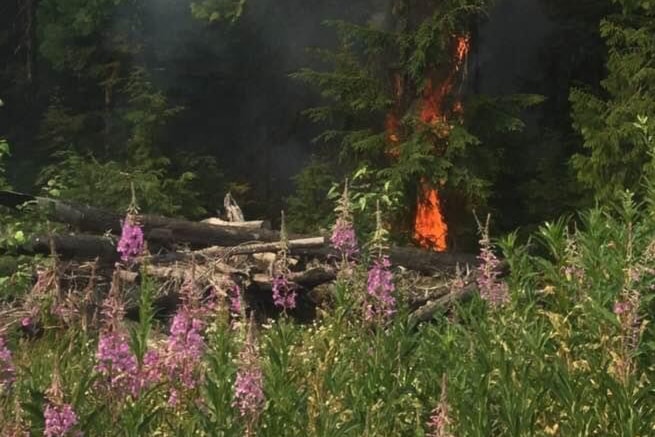As hazy, amber smoke often fills our valley many summers, and as we witness evacuees flee from their burning cities and communities, we91ÂãÁÄÊÓƵ™re reminded of the destructive terror wildfires bring.
The word alone strikes fear into the heart of man. But fire has been around a lot longer than mankind. As long as there91ÂãÁÄÊÓƵ™s been lightning and dry plants to burn, there91ÂãÁÄÊÓƵ™s been fire.
In fact, many lands and their ecosystems have evolved with fire - especially the Okanagan. Our grasslands and forests were born of fire.
Like sunshine and rain, fire is necessary to the health of our wilderness. As our native grasses and trees grow, their far-reaching root systems draw up nutrients from deep within the soil. Plants flourish and grow carpeting the earth. Gradually, grasses die, leaves, needles and branches fall, but in the dry Okanagan little rots. The nutrients are locked in dead plants. Only fire can quickly reduce the dead organic matter to mineral ash, releasing nutrients such as phosphorus, potassium, calcium and other elements. In fact, forests in dry areas, like the Okanagan, can literally starve without fires releasing nutrients.
In the spring following a burn, the sun warms the blackened earth creating a perfect environment for pioneering plants such as the gorgeous sun loving fireweed and other grassland wildflowers. Fireweed lupines, clovers and other legumes in grasslands, and alders in forest clearings, act as natural fertilizers by fixing nitrogen into the soil. And, of course, the mysterious and delicious morel mushrooms may sprout; their mycelium helping to decompose remnant plant pieces.
Lightning caused fires naturally swept through our Okanagan grasslands every 10 to 25 years, and through our forests about every 85 to 150 years. Ecologists know this as fire periodicity. But nature has miraculous ways of healing and regeneration. Once ravaged by fire a whole series of plants grows in a step-by-step change of succession in communities. The greatest biodiversity in our forests occurs ~ 25 years after a fire.
Birds and mammals instinctively move downwind or out ahead of the fire. Reptiles and amphibians head for water. Rodents burrow underground. And once the land has cooled, charred trees attract insects and insectivorous birds, especially woodpeckers which move in for insect feasts, further breaking up dead material while creating homes for cavity nesters. Deer, moose and elk move into the newly opened areas browsing on lush shrubs.
Our native (naturally occurring) plants thrive in a delicate balance between fire resistance and dependence. Sun loving grassland wildflowers bloom and drop seed in the spring before summer91ÂãÁÄÊÓƵ™s searing heat and wildfire season. Our most common trees, the Ponderosa pine and Douglas-fir have thick bark layers that shield the mineral rich, growing cambium layer from burning in quick grassland fires. Further up our hills, the Lodgepole seeds are locked into their cones with a sticky resin until fire91ÂãÁÄÊÓƵ™s intense heat melts them open.
Man has been conquered by wildfires, yet man has also used them for his benefit. The original Okanagan First Nations people carefully located themselves out of fire91ÂãÁÄÊÓƵ™s way during their summer migrations. Most encampments were beside a lake. Ellison Park, Kekuli Bay and Kickwillie Loop all were popular summer encampments along with many other lakeside areas.
On Aklstalk (huckleberry place), now Silver Star mountain, the Okanagan First Nations men lit strips of fire to drive deer down preplanned mountain paths for annual harvests before winter. The fires in turn enhanced berry growth for next season91ÂãÁÄÊÓƵ™s pickings and encouraged the browsers to return.
This is the first in a two-part series on understanding how wildfires affect us today.
Roseanne Van Ee enthusiastically shares her knowledge of the outdoors to help readers experience and enjoy nature. Follow her on Facebook.



